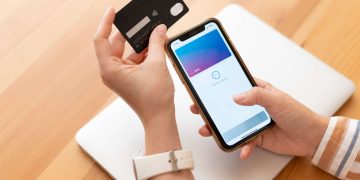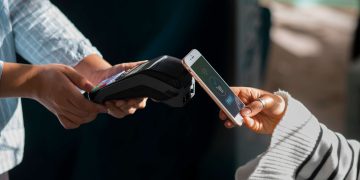In today’s digital age, protecting your mobile wallet is crucial for secure mobile payments. With the rise of mobile payment apps, ensuring that your financial information remains safe is more important than ever. By following best practices, such as using strong passwords, enabling two-factor authentication, and regularly monitoring your transactions, you can significantly reduce the risk of fraud and unauthorized access. Prioritizing mobile wallet security will help you enjoy the convenience of mobile payments with peace of mind.
Understanding the Risks of Mobile Payments
Before diving into best practices, it’s essential to recognize the risks associated with mobile payments. The primary threats include data breaches, phishing attacks, and unauthorized access. Cybercriminals often target mobile payment systems to steal personal information, banking credentials, and even funds directly from users’ accounts.
Data breaches can occur when a hacker gains access to a retailer’s database, compromising sensitive customer information. Additionally, phishing attacks—where attackers pose as legitimate entities to obtain sensitive information—can trick users into revealing their login credentials. Unauthorized access can result from weak passwords or inadequate security measures, making it easier for thieves to exploit vulnerabilities.
Being aware of these risks is the first step toward safeguarding your mobile payment methods. By understanding the potential threats, users can adopt proactive measures to minimize their exposure and protect their financial information.
Choosing Secure Mobile Payment Apps
When it comes to mobile payments, the choice of application plays a significant role in your security. Not all mobile payment apps are created equal, so it is vital to choose reputable ones. Start by researching popular payment platforms like Apple Pay, Google Pay, or PayPal, which are known for their robust security features.
Look for apps that employ encryption technology to protect your data. Encryption ensures that your sensitive information, such as credit card numbers and personal details, is scrambled and unreadable to unauthorized users. Furthermore, opt for applications that offer two-factor authentication (2FA). This extra layer of security requires users to verify their identity through a second method, such as a text message or an email, before completing a transaction.
Additionally, read user reviews and check for security certifications. Reputable apps often have a history of regular updates and strong customer support, which are indicators of their commitment to user safety. By taking the time to choose a secure mobile payment app, you set a solid foundation for safe transactions.
Setting Strong Passwords and Enabling Biometric Authentication
Once you’ve selected a secure mobile payment app, the next step is to protect your account with strong passwords. A weak password is one of the easiest ways for hackers to gain access to your financial information. Instead of using easily guessable information, such as birthdays or common words, create a complex password that combines uppercase letters, lowercase letters, numbers, and special characters.
Moreover, consider using a password manager to keep track of your credentials. These tools can generate and store strong passwords for you, reducing the risk of using the same password across multiple platforms. This practice minimizes the chance that if one account is compromised, others will follow suit.
In addition to strong passwords, enabling biometric authentication—such as fingerprint or facial recognition—can significantly enhance your security. Biometric features provide a convenient and highly secure method of accessing your mobile payment app. This means that even if someone obtains your password, they would still be unable to access your account without your unique biometric data.
Keeping Your Device Secure
Your mobile device itself is a crucial aspect of your mobile payment security. If your phone is not secure, even the best payment app can be compromised. Start by ensuring that your device is always updated with the latest operating system and security patches. Manufacturers frequently release updates to address vulnerabilities, and neglecting to install them can leave your device open to threats.
Next, set a strong screen lock on your device. This can be a PIN, password, or biometric lock. A secure screen lock acts as the first line of defense against unauthorized access. Additionally, consider enabling remote wipe capabilities. This feature allows you to erase your device’s data if it gets lost or stolen, ensuring that your financial information remains safe.
Furthermore, be cautious when downloading apps. Only download mobile payment apps from trusted sources, such as official app stores. Third-party apps may not have undergone rigorous security checks, increasing the risk of malware or spyware infecting your device. By keeping your device secure, you fortify the barrier protecting your mobile payment information.
Utilizing Security Features in Mobile Payment Apps
Many mobile payment apps come equipped with a variety of built-in security features designed to protect users. Familiarize yourself with these features and utilize them to enhance your security. For instance, most apps offer transaction alerts, which notify you of any purchases made using your account. These alerts can help you quickly identify unauthorized transactions and take appropriate action.
Additionally, look for apps that allow you to set spending limits or manage notifications. By keeping a close eye on your transaction history, you can spot any unusual activity and address it immediately. Many apps also provide options to lock or suspend your account temporarily if you suspect fraudulent activity.
Always take advantage of these security features. They serve as valuable tools to help you maintain control over your financial transactions and protect your sensitive information.
Being Wary of Public Wi-Fi
While mobile payments offer unparalleled convenience, using them over public Wi-Fi can expose you to significant security risks. Public networks, such as those in coffee shops, airports, or libraries, are often unsecured, making it easy for hackers to intercept data transmitted over these connections.
To minimize risks, avoid making mobile payments when connected to public Wi-Fi. If you must use public networks, consider utilizing a virtual private network (VPN). A VPN encrypts your internet connection, making it much more difficult for hackers to access your data.
Additionally, always turn off automatic connections to Wi-Fi networks on your device. This prevents your phone from inadvertently connecting to unsecured networks. By remaining vigilant about your Wi-Fi connections, you can greatly reduce your exposure to cyber threats.
Recognizing Phishing Attempts
Phishing attacks are one of the most common methods employed by cybercriminals to steal personal information. They often take the form of deceptive emails, text messages, or phone calls that appear to be from legitimate sources. To protect yourself, it is crucial to be aware of the signs of phishing attempts.
Always scrutinize the sender’s email address or phone number. Phishing attempts often use addresses that look similar to legitimate ones but contain slight variations. For example, instead of “paypal.com,” you might see “paypa1.com” with a number instead of a letter. Additionally, look for poor grammar or spelling errors, which are red flags for fraudulent messages.
Never click on links or download attachments from unknown sources. If you receive a message requesting sensitive information, go directly to the company’s official website instead of clicking on links. By recognizing phishing attempts, you can protect your mobile payment information from falling into the wrong hands.
Regularly Monitoring Your Accounts
An essential part of mobile payment security is staying vigilant by regularly monitoring your accounts. Review your transaction history frequently to identify any unauthorized charges. If you notice anything suspicious, report it immediately to your payment provider and your bank.
Set up alerts for large transactions or unusual spending patterns. Many banks and payment apps allow you to customize notifications based on your spending habits. By receiving alerts for unexpected transactions, you can quickly take action to mitigate potential fraud.
In addition to monitoring your payment accounts, review your bank statements regularly. Ensure that all charges align with your records. If discrepancies arise, investigate them promptly. This proactive approach can help you catch fraud early, preventing more significant financial loss.
Educating Yourself About New Security Threats
The world of cybersecurity is constantly evolving, with new threats emerging regularly. Staying informed about the latest security threats and trends is crucial for maintaining the safety of your mobile payments. Follow reputable sources of information, such as cybersecurity blogs or financial news outlets, to keep abreast of developments.
Participate in online forums or communities focused on mobile payments and security. Engaging with others who share your interests can provide valuable insights and tips. Additionally, consider taking online courses or webinars that focus on cybersecurity best practices. The more you educate yourself, the better equipped you will be to protect your mobile payment information.
Staying Proactive in Mobile Payment Security
While mobile payments offer convenience and efficiency, they also require careful attention to security. By understanding the risks and adopting best practices, users can significantly enhance their protection against potential threats. Choosing secure apps, setting strong passwords, keeping devices secure, utilizing built-in features, and staying vigilant against phishing attempts are essential steps in safeguarding your mobile payment information.
Moreover, regular monitoring of accounts and ongoing education about new threats are vital components of a comprehensive security strategy. As the landscape of mobile payments continues to evolve, remaining proactive in your approach to security will ensure that you can enjoy the benefits of mobile payments without compromising your financial safety. By taking these precautions, you can confidently embrace the convenience of mobile payments while minimizing risks.

































